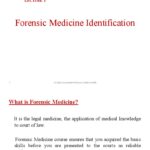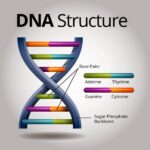Polymerase Chain Reaction (PCR) is a ubiquitous molecular biology technique employed to amplify specific DNA sequences. The success and reliability of PCR hinge critically on the quality of the template DNA. The question then arises: Is “clean” DNA absolutely necessary for PCR analysis? The answer, nuanced and multifaceted, is a resounding yes, albeit with specific considerations depending on the application.
The Centrality of Template Quality
PCR amplifies a targeted DNA region. The template DNA serves as the blueprint. If the template is riddled with contaminants, inhibitors, or degradation products, the fidelity and efficiency of the PCR process are substantially compromised. This can manifest in a variety of undesirable outcomes, from inaccurate amplification to complete PCR failure. Understanding the potential pitfalls associated with compromised template DNA is thus paramount.
Contaminants: The Silent Saboteurs
A plethora of contaminants can insidiously undermine PCR performance. These fall into several broad categories:
- Proteins: Residual proteins, if present, can sequester DNA polymerase, thereby impeding its activity. Certain nucleases, protein enzymes that cleave nucleic acids, may degrade the template DNA itself.
- Salts: Excessive concentrations of salts, such as EDTA or NaCl, can interfere with DNA polymerase activity, affecting primer annealing and strand extension. Even seemingly innocuous salts can have profound effects at sufficiently high concentrations.
- Organic Solvents: Substances like ethanol or phenol, commonly employed in DNA extraction protocols, are potent PCR inhibitors. Even trace amounts of these solvents can disrupt enzyme function.
- Detergents: Surfactants such as SDS (sodium dodecyl sulfate), often used to lyse cells, can denature DNA polymerase, rendering it inactive. Their presence can drastically reduce amplification efficiency.
- Humic Substances: Particularly relevant in environmental samples, humic substances are complex organic molecules that can bind to DNA polymerase and inhibit its activity. These substances pose a significant challenge in PCR analysis of soil or water samples.
- Inhibitory Metal Ions: Certain metal ions, such as copper or iron, can interfere with DNA polymerase activity and even degrade DNA. These ions can be introduced from laboratory equipment or reagents.
DNA Degradation: A Fragmented Foundation
DNA degradation presents another significant obstacle to successful PCR. Factors contributing to DNA degradation include:
- Nucleases: As mentioned earlier, nucleases can cleave DNA into smaller fragments, reducing the amplifiable template.
- Oxidation: Exposure to oxygen radicals can damage DNA, leading to strand breaks and base modifications.
- UV Radiation: Ultraviolet radiation can induce thymine dimers and other DNA lesions, impeding polymerase progression.
- Hydrolytic Cleavage: Prolonged exposure to water can lead to hydrolytic cleavage of the phosphodiester backbone, resulting in DNA fragmentation.
Degraded DNA may still be amplified, but the yield may be significantly reduced, and the resulting amplicons may be inaccurate, particularly if the degradation occurs within the primer binding sites.
Strategies for Ensuring Template Purity
To mitigate the challenges posed by contaminants and DNA degradation, various strategies are employed to purify and preserve template DNA:
- DNA Extraction Kits: Commercial DNA extraction kits offer standardized protocols for isolating DNA from a wide range of sample types. These kits typically employ a combination of lysis, binding, washing, and elution steps to remove contaminants.
- Phenol-Chloroform Extraction: A classic method for DNA purification, phenol-chloroform extraction separates DNA from proteins and other cellular components based on their solubility in different phases.
- Ethanol Precipitation: Ethanol precipitation is used to concentrate DNA and remove salts and other soluble contaminants.
- Column Chromatography: Column chromatography employs solid-phase matrices to selectively bind DNA, allowing for the removal of contaminants through washing steps.
- DNase Treatment: DNase enzymes can be used to remove contaminating DNA from RNA samples, ensuring that only RNA is amplified during reverse transcription PCR (RT-PCR).
- RNase Treatment: Conversely, RNase enzymes can be used to remove contaminating RNA from DNA samples.
- Storage Conditions: Proper storage of DNA is crucial to prevent degradation. DNA should be stored at -20°C or -80°C in a buffer that protects it from degradation.
Specific Scenarios and Considerations
The stringency of the DNA purity requirement often depends on the specific PCR application:
- Quantitative PCR (qPCR): qPCR demands highly pure DNA to ensure accurate quantification of target sequences. Even minor contaminants can significantly affect the accuracy of quantification.
- Nested PCR: Nested PCR, which involves two rounds of PCR using different primer sets, can tolerate slightly less pure DNA, as the second round of amplification can overcome some background amplification. However, clean DNA still contributes to better sensitivity and specificity.
- PCR for Sequencing: PCR products intended for sequencing need to be free of contaminants that could interfere with the sequencing reaction.
- PCR for Cloning: PCR products intended for cloning must be pure to avoid introducing unwanted sequences into the vector.
- Direct PCR: Direct PCR, which involves amplifying DNA directly from a biological sample without prior extraction, is inherently more susceptible to inhibition. Special considerations, such as the use of specialized DNA polymerases and optimized buffer conditions, are necessary.
Troubleshooting and Optimization
When encountering PCR problems, template quality should be among the first parameters investigated. If contamination is suspected, re-purification of the DNA may be necessary. Adding PCR enhancers, such as BSA (bovine serum albumin), can sometimes mitigate the effects of inhibitors. Optimizing annealing temperature and primer design can also improve PCR performance, particularly when dealing with suboptimal template quality. Furthermore, selecting a DNA polymerase with high tolerance to inhibitors can also be advantageous.
In conclusion, while some PCR applications may tolerate slightly less pure DNA, the general principle holds true: “clean” DNA is essential for reliable and accurate PCR analysis. Employing appropriate DNA extraction and purification techniques is critical for minimizing the impact of contaminants and DNA degradation, thereby maximizing the success of PCR experiments. Investing in high-quality template DNA is an investment in the integrity and validity of the experimental results.










Leave a Comment